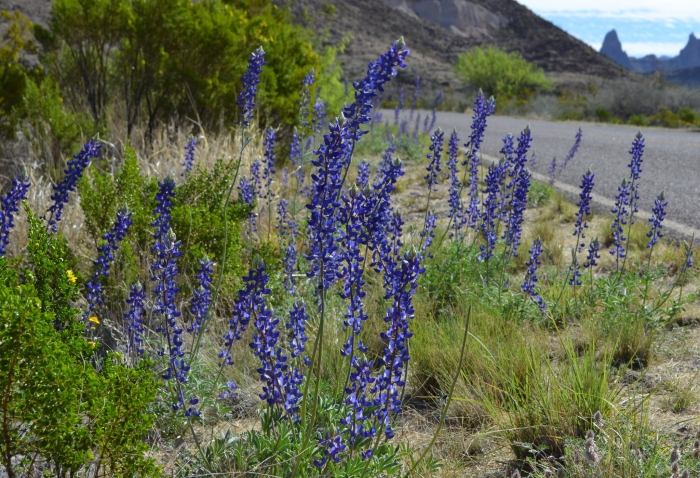Big Bend Bluebonnet
(Lupinus havardii)
Big Bend Bluebonnet (Lupinus havardii)
/
/

Cody Stricker
CC BY 4.0
Image By:
Cody Stricker
Recorded By:
Copyright:
CC BY 4.0
Copyright Notice:
Photo by: Cody Stricker | License Type: CC BY 4.0 | License URL: http://creativecommons.org/licenses/by/4.0/ | Rights Holder: Cody Stricker | Publisher: iNaturalist | Date Created: 2019-03-14T12:17:20-07:00 |




























Estimated Native Range
Summary
Lupinus havardii, commonly known as Big Bend Bluebonnet, is an annual herb native to the Chihuahuan Desert region of Texas, particularly in gravelly and sandy soils along roadsides and in open areas. It can reach over 4 feet in height with a slender, erect branching stem. The height of the plant and its inflorescence is highly variable, depending on soil moisture, ranging from a few inches to a record of 5 feet 4 inches. The flowers are a striking purple to blue color, about half an inch long, with a white to yellow spot on the banner that turns red when the flower is no longer fertile, signaling to bees to visit more fertile flowers. The palmate leaves are composed of about seven leaflets. While predominantly blue, white and pink flowering individuals occur very rarely in the wild. The blooming period extends from January to June.
The Big Bend Bluebonnet is valued for its showy floral spikes that create spectacular displays, especially when massed in naturalistic settings. It is often used in wildflower mixes and as a border plant in xeriscapes due to its low water requirements. This species thrives in full sun and well-drained soils, making it suitable for rock gardens and areas with poor fertility. It is also a nitrogen-fixing plant, which can improve soil quality over time. However, it can be susceptible to fungal diseases if grown in conditions that are too moist or humid.CC BY-SA 4.0
The Big Bend Bluebonnet is valued for its showy floral spikes that create spectacular displays, especially when massed in naturalistic settings. It is often used in wildflower mixes and as a border plant in xeriscapes due to its low water requirements. This species thrives in full sun and well-drained soils, making it suitable for rock gardens and areas with poor fertility. It is also a nitrogen-fixing plant, which can improve soil quality over time. However, it can be susceptible to fungal diseases if grown in conditions that are too moist or humid.CC BY-SA 4.0
Plant Description
- Plant Type: Herb
- Height: 1-3 feet
- Width: 1-2 feet
- Growth Rate: Rapid
- Flower Color: Blue, Purple
- Flowering Season: Spring
- Leaf Retention:
Growth Requirements
- Sun: Full Sun
- Water: Low
- Drainage: Fast, Medium
Common Uses
Bee Garden, Bird Garden, Butterfly Garden, Deer Resistant, Drought Tolerant, Fragrant, Hummingbird Garden, Low Maintenance, Rabbit Resistant, Showy Flowers
Natural Habitat
Native to the Chihuahuan Desert region of Texas, particularly in gravelly and sandy soils along roadsides and in open areas
Other Names
Common Names: Chisos Bluebonnet
Scientific Names: , Lupinus havardii,
GBIF Accepted Name: Lupinus havardii S.Watson